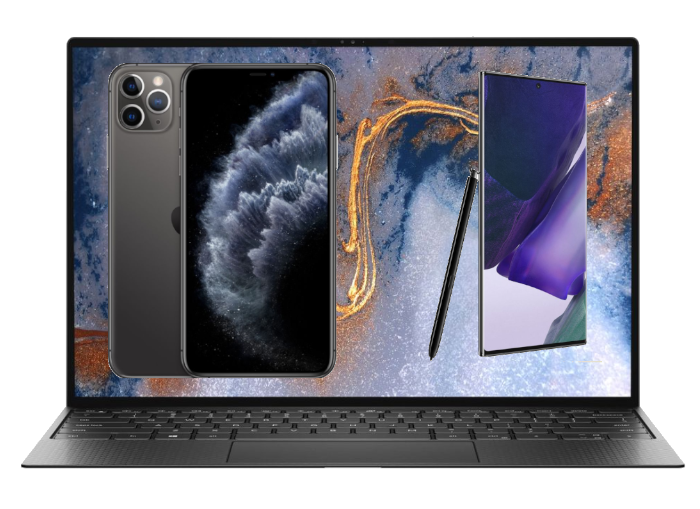
Many of the tasks handled by a computer may also be done on a smart-phone or tablet. The computing power of a flagship smart-phone generally rivals many laptops and desktop computers and most of us would attest to that.
From a technical and hardware perspective, the blurring lines become almost invisible.
The CPU (central processing unit) in a 2020 iPhone flagship or Samsung latest Galaxy Note20 Ultra are just as powerful as those in laptops or desktops. For all intents and purposes, a modern smart-phone is by and large a computer. It runs a computer OS (operating system), has computer hardware, and runs applications to do tasks. Just to bring in some perspective, they would have been categorized as supercomputers not too many years ago. Think of the computer that powered the first human being to the MOON 1969 - it had the computing power of a 1990 Nokia handset. That is how much we have moved on in such a short period.
Salient Attributes
Realistically though, form factor, cost and mobility are the most salient attributes to factor in when making a decision. The form factor of a smart-phone is not conducive to doing many things we do on desktop computers. Many tasks that people do on computers require big screens, various input devices, and more. Additionally, the tasks also might require better hardware that needs better cooling and power that a battery and a thin smart-phone can’t provide.Moreover, making things smaller and compact, as well as battery powered, is expensive. You can buy a really good desktop computer for the same price as a flagship smart-phone and it will be much faster, but it won’t be optimized to save power and it won’t fit in your pocket.
Of course, some people are making docks that you can plug your phone into and then connect it to a power source, maybe an external graphics card, and an external display with input devices and then turn it into a desktop computer. There is no technical reasons why they can’t, but it’s more of a “master of none” situation than anything else.
Good smart-phones are good at being smart-phones but try to turn a smart-phone into a desktop and it kind of sucks at it. Look at Microsoft’s hybrid tablet/laptops which kind of ended up being mediocre at both tasks. There are inevitable trade-offs.
It is invariably true that more and more personal computers are becoming mere terminals that connect to a network computer powered in the cloud - A server farm or server cluster is a collection of computer servers with almost unlimited power. In this regards, your smart-phone or laptop is just consuming content powered in the cloud so to speak. Think of all subscription applications you currently use - Microsft's Words,Excel and Adobe's Photoshop, Illustrator and Premiere they do not reside in your computer but in the cloud. Which device you use becomes a matter of preference.
People who used to buy laptops or desktops are just as efficient and productive with a tablet. You used to use a laptop to browse Face-book but now you have a 6.5" phone in your pocket that does it just as good. A recent survey makes smart-phones by far the most common and the most used computing devices out there. However, despite its omnipresence, there will always be niches it can't fill. For those who make almost all of the content you consume on the web - graphic designers, programmers, developers et al, a laptop or desktop rules supreme